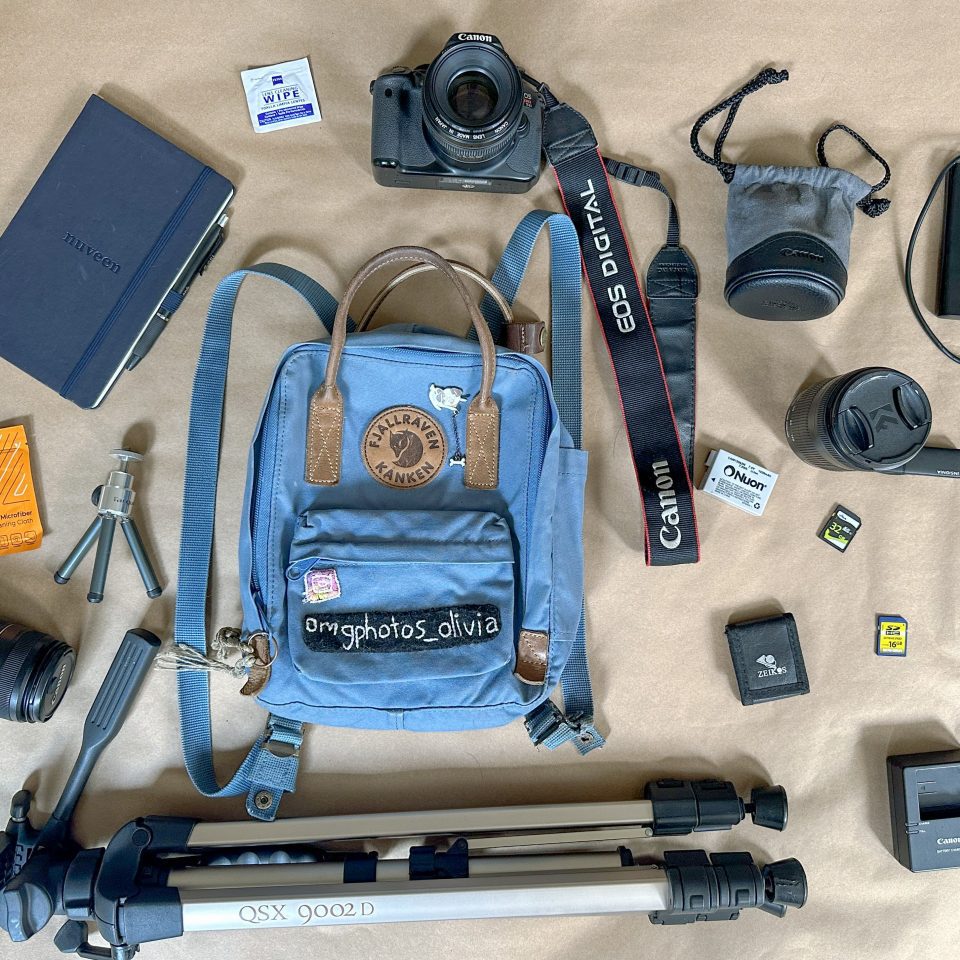Before starting photography, I felt overwhelmed by the numerous, extensive camera kits I saw online and from other photographers. However, photography doesn’t have to be complicated! As a student, my camera kit has remained relatively small, yet it still allows me to explore photography without breaking the bank.
Photography is the art of telling a visual story, and to do so does not require an expensive camera or equipment. Instead, it requires a keen eye and a passion to explore humanity. Photography is an art form, and as with any art form, the artist matters more than the tools.
The Bag

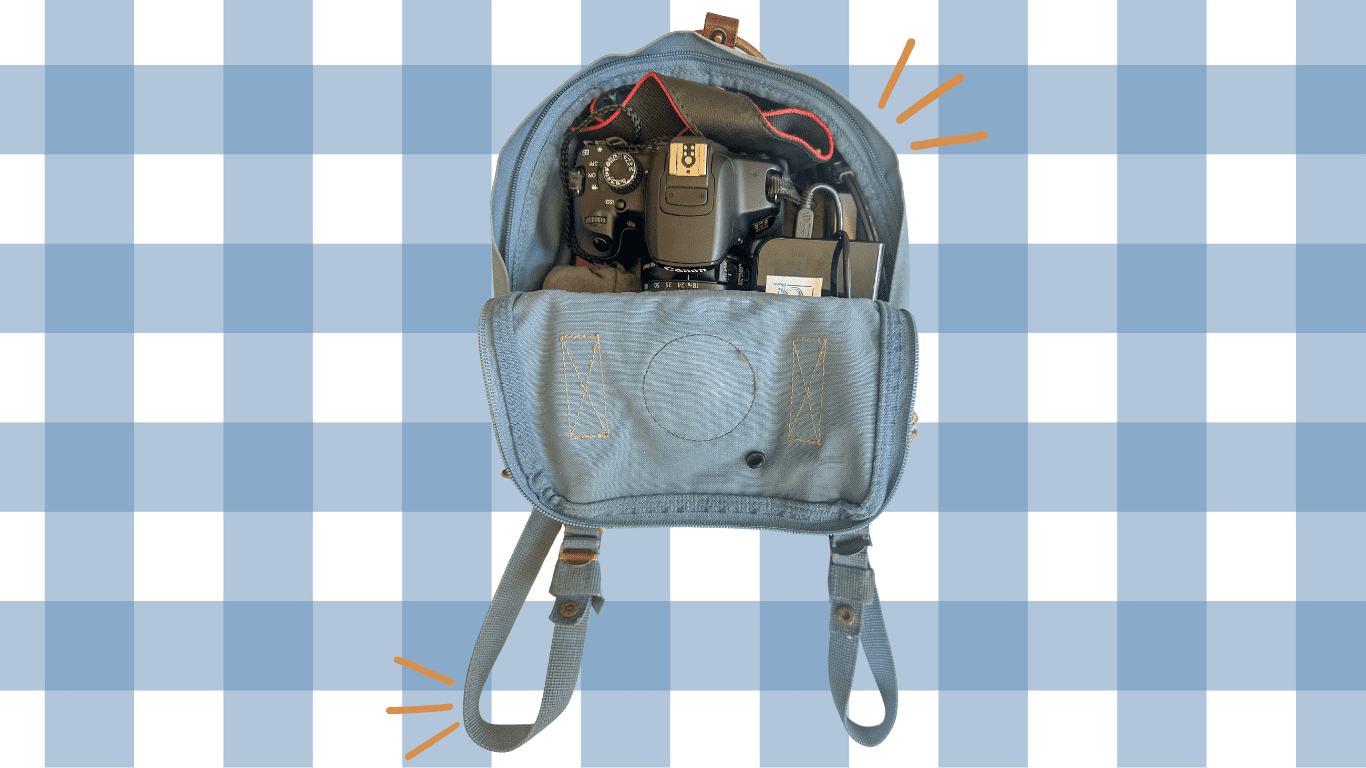
I use a Kånken Mini, which is only 29x20x13 cm. Since it is not a camera bag, it doesn’t have much camera protection or padding. The back has a small seat pad, which helps give the bag structure and protects the back of my gear. I placed a thick, fluffy sock at the bottom of the bag to protect my lenses when I set the bag down. To give the bag more structure in the back, I keep my journal behind my camera.
Although it is quite small, it can fit my camera with one of my larger lenses, a smaller lens, my journal, a hard drive, SD cards, and a small cleaning kit comfortably. The square design lends itself well to storing my equipment. The bag is also front-loading, which allows me to access my gear easily and keep it organized.
When choosing a camera bag, though it does not need to be a very expensive one, make sure your gear is secure. I’d recommend finding a front-loading one with a strong structure. Dakine also makes great bags, which are more affordable than bags marketed as camera bags.
The Camera
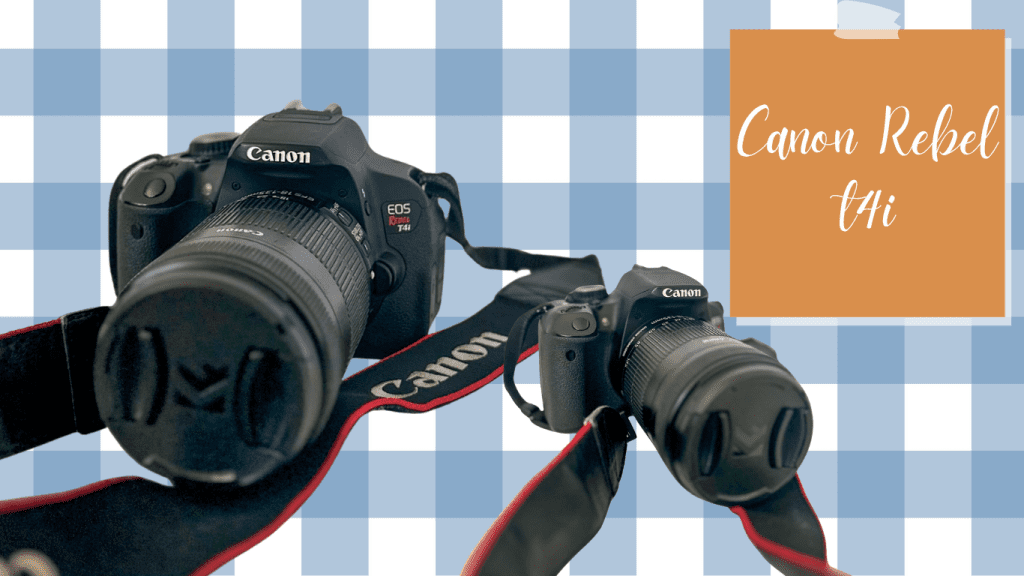
The classic starter camera!
Although Canon gets some hate in the photography community, the Canon Rebel is a great starting camera. It is easy to use, and you can find relatively cheap used ones or older models. The t4i was released in 2012, but my camera is still in great shape, and I am satisfied with the quality of photos it takes.
It is a great camera to learn on, with a user-friendly design and intuitive buttons. Especially when learning how to use a camera, it is important to have good automatic modes. I shoot almost completely manually now; however, when I was first learning how to use the camera, I relied on Creative Auto and Program Mode. These modes allowed me to learn how to take a good picture without feeling stressed to constantly adjust the settings. All cameras typically come with automatic or semi-automatic modes, but I think the Rebel did a good job taking consistent photos when using them.
The Lenses
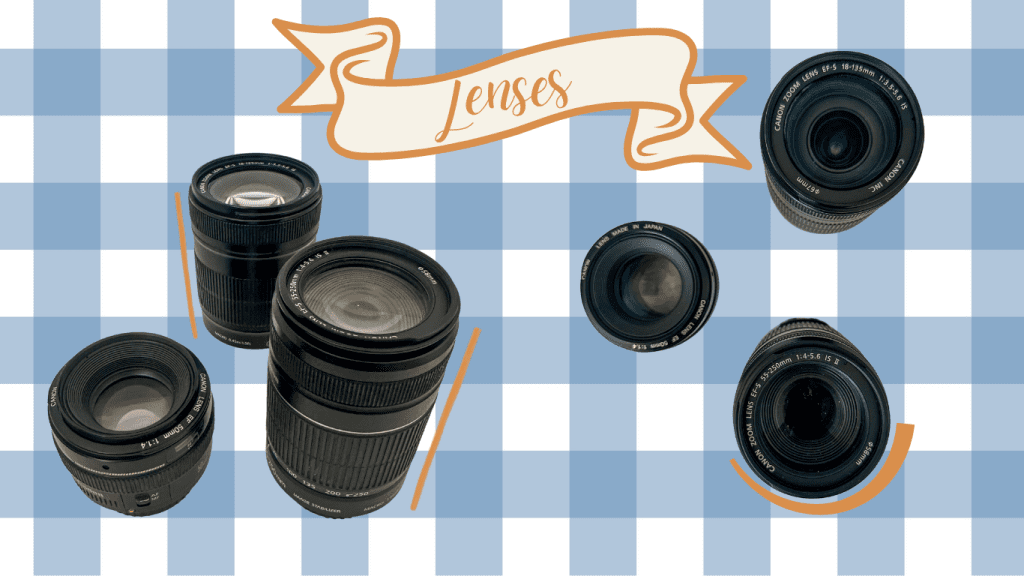
If you want to splurge on your camera kit, the lenses are the place to do it!
If you’re buying a starter kit, your camera will come with a lens, but I recommend diversifying your lens collection as you start taking more photos.
I like to shoot mainly with a 55-250 mm lens as I am not always close to my subject; however, the 18-135 mm lens is an extremely versatile lens, great for photo shoots. My last lens, the 50 mm lens, or as it is better known, the ‘nifty-fifty’, is a great starter lens. They are typically affordable while maintaining good image quality. It’s a great lens to learn the fundamentals on. I’ve used it to take photos anywhere from stills to street.
Overall, when looking for lenses, try to decide what kind of photography you like to do and find a lens tailored to your niche. The 50 mm is always a great choice if you’re brand new to photography. If you want a more flexible lens that allows you to shoot from different distances, I’d look for lenses with large versatility and a wide range of focal lengths.
Note-taking
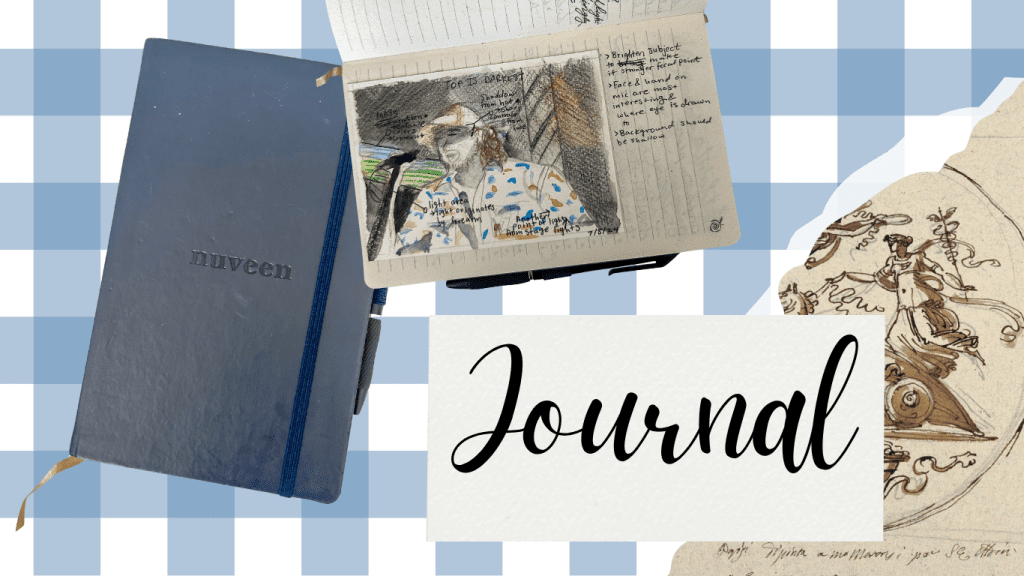
Though not directly photo-related, a journal or notebook is a must.
I love to use mine to plan out shoots and analyze photos I’ve taken. Don’t worry, as I’ve proved above, you don’t need to be a good painter to keep a photo journal! Learning how to work with light and color is crucial in photography. Keeping a journal has refined my photos and taught me how to spot different forms of light and color in my environment.
It’s also a great place to jot down notes or things you observe when you are out taking photos.
Good to Have and Photo Storage
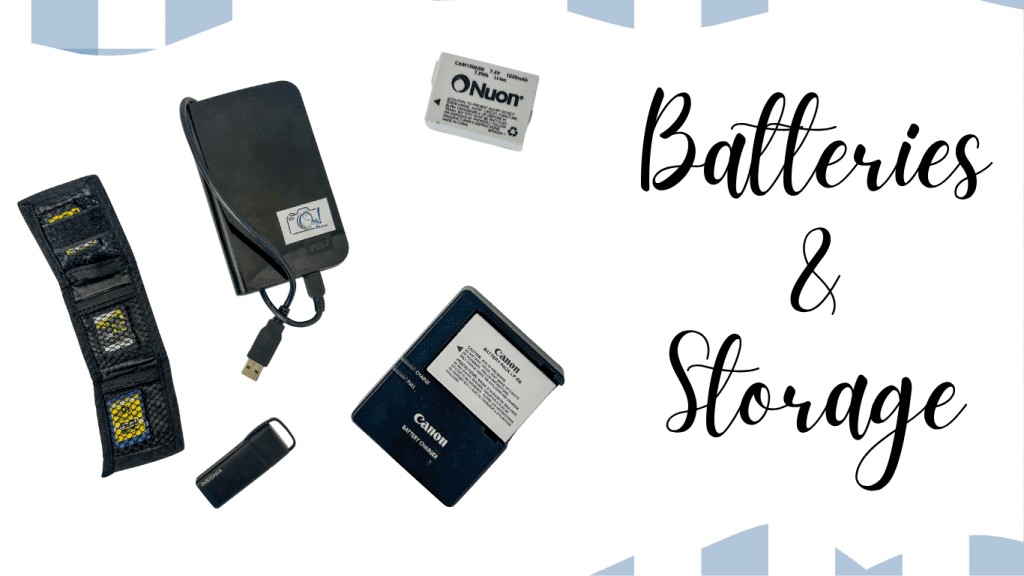
I didn’t always keep two batteries on me, but after accidentally forgetting to charge a dead battery before an event and frantically searching for a replacement, I make sure to always keep two in my bag as insurance.
Photo storage and organization are also really important and can be difficult to do on a tight budget. Though they can be a bit expensive, I recommend opting for a reliable hard drive over a cheaper one. When on the go, I like to keep a USB SD card adapter. Keeping an adapter makes it easier to upload photos when you are not by your computer or one that has an SD card port. Of course, keeping SD cards is a must! You can choose any size SD card, but I recommend not going for anything less than 16 GB. Since I shoot in RAW, I like to use 32 GB.
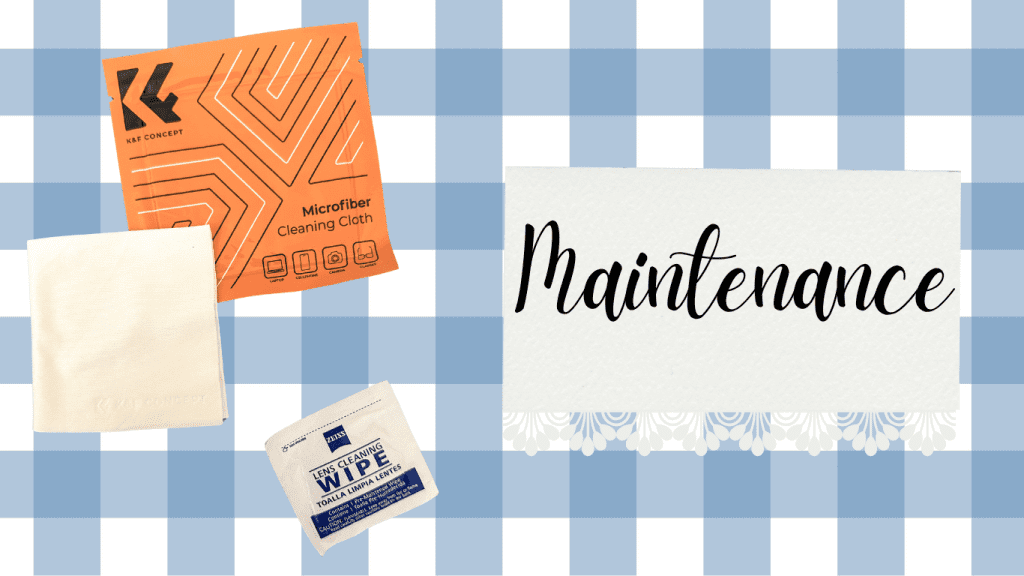
Camera Maintenance is extremely important. You don’t need a lot, but make sure to clean your camera regularly. Lens wipes are great for on-the-go use to wipe down your lens as needed. Keeping a microfiber cloth on hand is also always a good idea. I use mine to clean my lenses and camera body. Whether using a wipe or a spray, make sure to use a gentle cleaner so as not to damage lens coatings or cause any streaks.
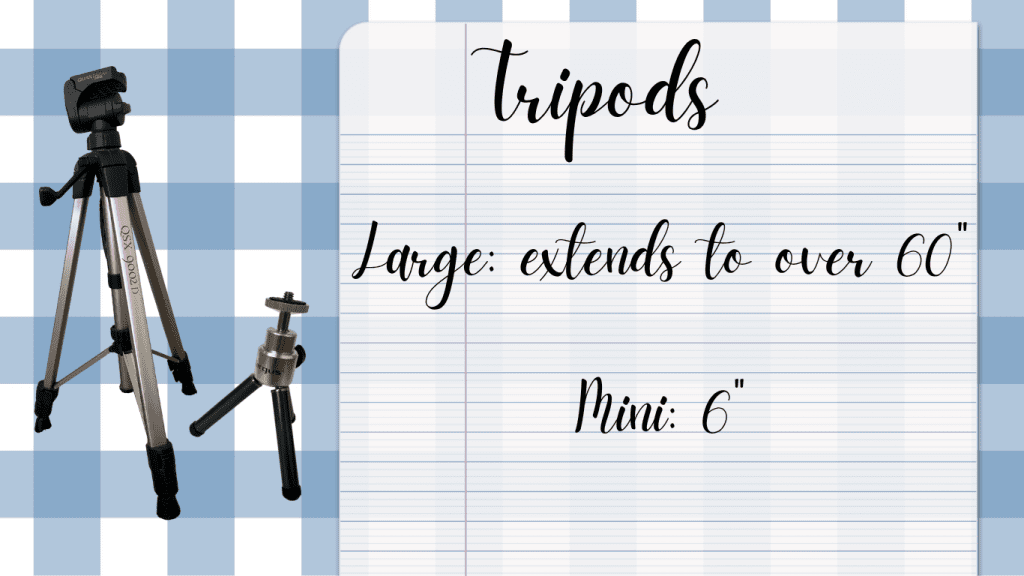
Finally, tripods. I don’t use my tripods very often, but they can be a great tool to have when doing landscape or portrait photography. If you plan to shoot at a low shutter speed, for example, if your environment is dark or your subject is still, using a tripod is vital to avoid blurry photos.
I recommend investing in a full-sized tripod, but even my mini tripod has been useful when I’m out and don’t want to carry my large tripod with me.
No matter what your gear looks like, even if you just have a phone, you can capture exceptional photos. Learning the fundamentals of photography and how to properly edit an image is far more important than the gear you use!
This site contains affiliate links, which means we may earn a commission if you click through and make a purchase—at no additional cost to you. We only promote products or services we believe in.

